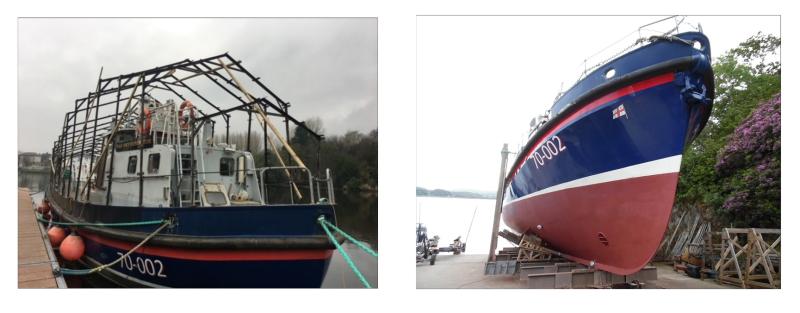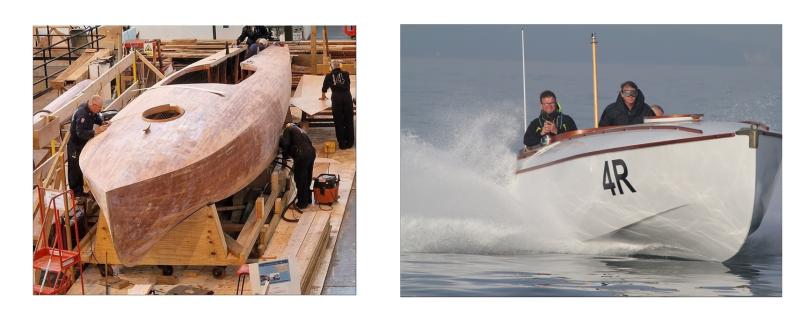
In honour of National Historic Ships UK's late Director, Martyn Heighton, the Excellence in Maritime Conservation Award was launched in 2019 to mark best practice in the conservation of historic vessels. Our 2024 Judging Panel were Hannah Cunliffe, Director of National Historic Ships UK; Stephen Beresford, Senior Conservation Boat Builder at Windermere Jetty Museum; and Robin Diaper, Curator of Maritime & Social History at Hull City Council, our 2023 winner for Spurn lightship.
The Award boasts a hand-carved trophy that was commissioned using wood from HMS Victory. The winner's name has been engraved on the plaque, and will be displayed at their site for the next year. In addition, there are cash prizes of £500 for the Winner and £200 for a Highly Commended project, courtesy of Beckett Rankine, the UK's leading marine civil engineering consultancy.
WINNER: Bernard Condon - Grace Paterson Ritchie
The 2024 Martyn Heighton Award for Excellence in Maritime Conservation goes to Bernard Condon for his exemplary conservation of the lifeboat Grace Paterson Ritchie, returning her to in-service condition with 95% of the hull and fittings intact. The Judging Panel were particularly pleased to award the trophy to Bernard, as the first private owner to win the Award since it launched in 2019.
Gracie, as she is affectionately known, is a RNLI Clyde Class lifeboat designed by John Tyrrell of Arklow and built by Yarrow’s on the Clyde in 1965. The Clyde Class was unique, the largest class ever built for the RNLI, and the only class ever designed to be permanently manned. Gracie and her crew served with great distinction both at Kirkwall and Clovelly, being launched 197 times and saving 86 lives. When withdrawn from service in 1988, she was sold to the Icelandic Lifesaving Association and became the Reykjavik lifeboat, where she served with further and great distinction until 2002.
In 2018, facing an uncertain future, she found Bernard, who also owns the last Watson Class lifeboat ever built, the Joseph Soar. The restoration of Grace Paterson Ritchie was a logistically challenging, four-year journey, through Covid and beyond. Bernard and his colleagues Pippin McGrath and Ishabel MacIntyre stopped counting after well over 26,000 intense, painful, and sometimes brutal, work hours. Now fully restored, Gracie’s mission is to preserve RNLI heritage and contribute to its future. She is used exclusively in promotion and fundraising for present and future RNLI generations. Bernard says: “The honour of receiving the Martyn Heighton Award is somewhat overwhelming. Martyn’s volumes have been our go-to for years, and we never in our wildest dreams imagined we’d be worthy of his name”.

HIGHLY COMMENDED: Boathouse 4 at Portsmouth Historic Quarter - CMB 4R
The judges awarded the status of Highly Commended to Boathouse 4, which built a full-scale operational replica of the First World War torpedo boat CMB 4, enhancing our knowledge of the design whilst preserving the original vessel. CMB 4R was built entirely by volunteers over a period of seven years, guided by experienced boatbuilding professionals. Although the build used modern glues, all the techniques are traditional ones that would have been deployed in 1916. The boatbuilders worked from the original plans drawn on wax cloth and annotated by the designer John Thornycroft. The new CMB conducted successful sea trials in September 2023.

